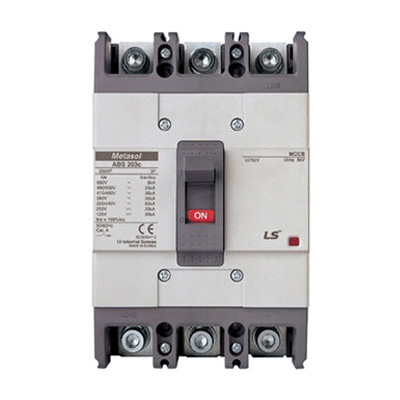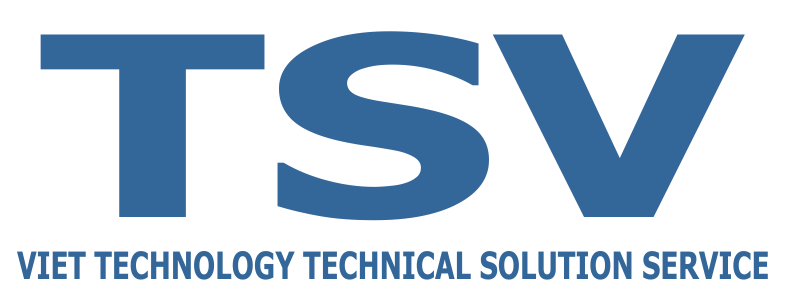Using automation equipment is the current trend. In Vietnam, more and more factories and workshops are applying these devices and initially bringing high productivity and efficiency. Do you want to know what devices make up the automation system? Let’s find out with Vietts .
What is automation equipment?
Automation devices are devices used to program automatic control of motors, production lines and machines, thereby helping to improve working efficiency.
An automation system is a combination of a series of electrical, mechanical and electronic devices. They will be connected by engineers so that they are smooth and stable according to a certain design to ensure logic. There are thousands of automation devices on the market. Therefore, users need to learn to use it to get the most benefit.
Users can consider using the “automatic electrical equipment” of the most famous manufacturers today such as: LS, Omron, ABB, INVT, Schneider …
Popular automation devices
Types of sensors
A sensor is an electrical device used to measure signals of pressure, temperature, speed, light, and other external phenomena and factors, and converts them into standard electrical signals. for the controller to process and analyze.
Nowadays, people make sensors from sensoir probes whose electronic part can change properties according to changes in ambient factors. A sensor usually has circuit elements.
People divide sensors into: passive sensors, active sensors, digital sensors, analog sensors… However, the most common is still the way of dividing based on signal elements: optical sensors, sensors. Proximity sensor, infrared sensor, pressure sensor, temperature sensor…
Flame Sensor
Switchgear
Switchgear is a common name for devices such as: switching fuse sets, HRC fuse sets, no-load isolators, switches, circuit breakers CBs, magnetic starters, MCCBs, MCBs, ELCs.
The common function of switching devices is to control, convert and protect electrical equipment as well as electrical circuits to be safe and avoid possible problems. The switchgear is considered as a switch. These devices also participate in cutting the current if any electrical problems reported by the sensor are detected.
This is essential with automated machines in the factory, with high operating capacity. These devices in the system do not work individually but combine to transmit, distribute and convert electricity efficiently and economically.
Some people will mistake it for fuses, but these devices not only open and close the circuit, but also switch to protect the entire system.
A switch is considered effective when it has all four features: fast operation, high reliability, redundancy of manual operations, separation between faulty and non-faulty parts. faulty.

Relay – Relay
Relay is also known as a relay by Vietnamese people, it is an electromagnetic switch. Operation depends entirely on a relatively small but strange current that can turn on or off a larger current.
A relay will have 3 blocks, which are:
+ Actuator block: Its task is to generate signals for the control circuit.
+ Receiver block: Its function is to receive the signal from the input and then turn it into a quantity to provide a signal for the intermediate block.
+ Intermediate block: This block will receive the signal from the receiving block and then turn it into a quantity for the relay to act on.
With a relay when buying, we need to pay attention to: Voltage, maximum amperage, optimal trigger voltage.
Customers can refer to the types of relays of LS, Mitsubishi, Omron, Delta …
Inverter
In the automation system, we do not forget to mention the inverter. Inverter is a device researched and manufactured by humans to convert alternating current at this frequency into an alternating current of other and adjustable frequencies.
In a production system, there will be many operating devices: electric motors, pumps, motors… They do not work at the same level. With the change in output, the productivity is continuous, the available levels are often not able to meet. The inverter is a smart and useful solution to solve the above conundrum.
What are the benefits of using an inverter: Reducing starting current helps to avoid voltage drops, easily reversing and changing motor speed, avoiding sudden start when the motor is under heavy load, helping the system safe and stable. Because the inverter can be combined with communication modules, monitoring and control becomes easier.
The structure of the inverter includes: control circuit, rectifier, IGBT inverter, filter and brake resistors, keyboard, DC reactor, AC reactor, communication module, display screen market…
People will divide inverters into 2 basic types: inverters for 1-phase motors, inverters for 3-phase motors. The most common today is the 3-phase motor inverter.
In addition, to meet the needs of different systems, people have manufactured various types of inverters such as: tension inverters, inverters for water pumps, elevator inverters, crane inverters, etc. inverter for plastic injection machine, inverter for air compressor, inverter for explosion prevention…
Image Processor
Image processor or image processing sensor is an essential device for printing automation systems in printing, packaging and food production plants.
Delta’s Machine Vision is the most popular image processing system today. Because it has high precision, fast processing speed, intelligent operation interface, multi-tasking and can connect up to 8 cameras. Thanks to that, the system can automatically eliminate defective products that people often ignore, help assemble machines more accurately, reduce the rate of defective products…
Servo Motor
The full name of that servo is servo motor. This is 1 automation device, type with feedback sensor to perform action adjustment.
In automated machinery, this device is in the control system. It provides sufficient force for machine movements. Currently, people divide servos into two types: DC servo, AC servo. Comparing 2 AC servos with DC servos, the size is more compact, so the AC type is used the most. However, depending on the type, it will have its own advantages and disadvantages and is suitable for different systems.
In principle, Servo is a closed loop feedback system. The output signals of the motor will be connected to the control circuit. When the engine is running, the position and speed will be fed back to the circuit.
When the motor rotates, it encounters obstacles or influencing factors. The feedback mechanism will detect that the output is not guaranteed. The control circuit will correct this deviation until the motor operates correctly. In some systems, to increase the torque, a reduction gearbox is installed.
PLC Programmer
Actually PLC is just an abbreviation of the full phrase Programmable logic controller. It is a logic controller or in other words a programmable controller. This device is often found in automated production lines in factories.
With this device, users can flexibly change and transform logic control algorithms through programming languages to set up operations according to a certain process. When the PLC operates, it will not only rely on the signals at the input, but also on the algorithms written by humans to output signals at the output and control other devices to operate.
A complete PLC will have a structure including: ROM and RAM program memory, input module, output module, CPU central processing unit.
The operation of the device is as follows: The signal of the contac, sensoir device through the input module to the CPU. Here the CPU will process to put the control signals through the module out. Finally, the external devices will be controlled according to the program that was originally programmed.
Using PLC brings people many benefits such as: Executing complex algorithms correctly. Simple circuit structure will help people when repairing and maintaining convenient. Besides, engineers can change the program flexibly. The structure of the PLC is a modular structure, so it can expand the function as well as expand the output and input.
HMI . screen
If you are a person working in the field of technology, you will know that HMI stands for the phrase Human – Machine – Interface. This is a bridge device, communicating between the machine and the operator. The process of communication between people and machines is more convenient and accurate through 1 screen. And that is the HMI.
An HMI is made up of 3 parts which are:
+ Software: It is the communication settings, interface design, programs.
+ Hardware: Includes a screen, buttons, chip, CPU and program memory: RAM, ROM, EPROM/Flash…
+ Communication part: Includes communication ports: RS485, RS232, USB, Ethernet. Some other communication protocols such as: CANbus, Mobus, MPI, PPI, Profielbus.
HMI is widely applied because the device has many advantages such as: It can connect strongly with many devices, many different interfaces. Simple operation so users can conveniently install, use or repair. Another highlight of it is complete, accurate and easy to add information needed for operation.
Customers can consider using HMIs of ABB, INVT, Schneider, Schneider…
Contactor – Magnetic start, soft start
We have heard of the Contactor – a low voltage electrical appliance. Its function is to switch on and off the electrodynamic circuit on a regular basis.
This device makes a great contribution to controlling lighting systems, water pumping systems, compensating capacitors, motor systems, etc. Users only need to press the button, remote control or automatic installation.
A contactor will consist of 3 main parts:
+ Contact system: Including main contacts, auxiliary contacts for large currents and small currents to pass through.
+ Arc extinguishing system: Helps to extinguish fire at the contacts, limiting gradual wear
+ Electromagnet: With spring, iron core, coil
Currently, the contactors are designed to be compact, so they are very suitable for installation in small spaces where the installation of circuit breakers is inconvenient. Fast switching time, safe and friendly to people and surrounding machines. Finally, there is the ability to work stably, sustainably, with few incidents.
The source
Power supplies with built-in devices will help people use the system efficiently, quickly and simply. This is a system that helps distribute electricity efficiently in lines and machines. It ensures sufficient and smooth power for operation.
Application of automation equipment
Automated electrical equipment is increasingly being applied strongly not only in industrial production activities but also in human life because of the benefits it brings. With a system of automation equipment, people can increase productivity and labor output, increase product quality, reduce labor usage, and shorten production time. Specifically:
+ Automation in industrial machinery: Automatic lines, robots and robotic arms, printing machines, packaging machines… are really fast and accurate for assembly and processing.
Factories that are using automation equipment a lot, such as: food processing, beverage production, mechanical engineering, component assembly, automobile manufacturing, etc.
+ Automation in agriculture: Automatic lighting systems, sprinkler systems, heating, wastewater treatment … used in farms, farms … will help people save energy and increase effective.
+ In addition, these “automation devices” are also used in traffic, medicine, teaching, and experiments.
Need advice on automatic electrical equipment, contact us today.





